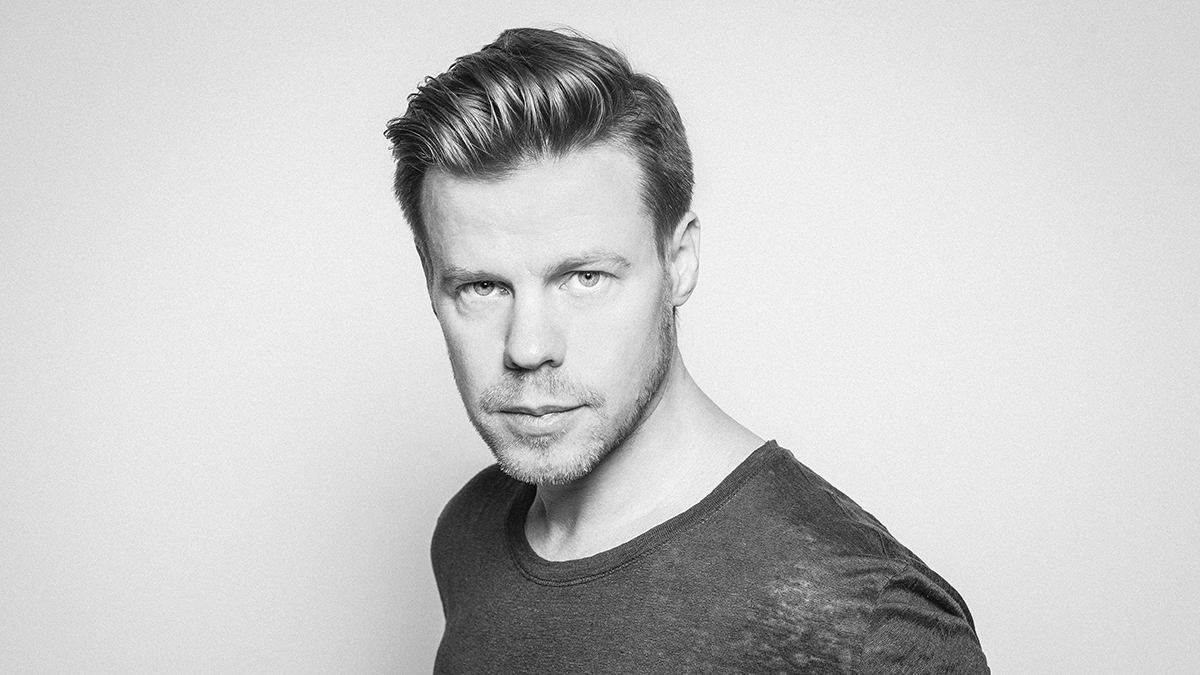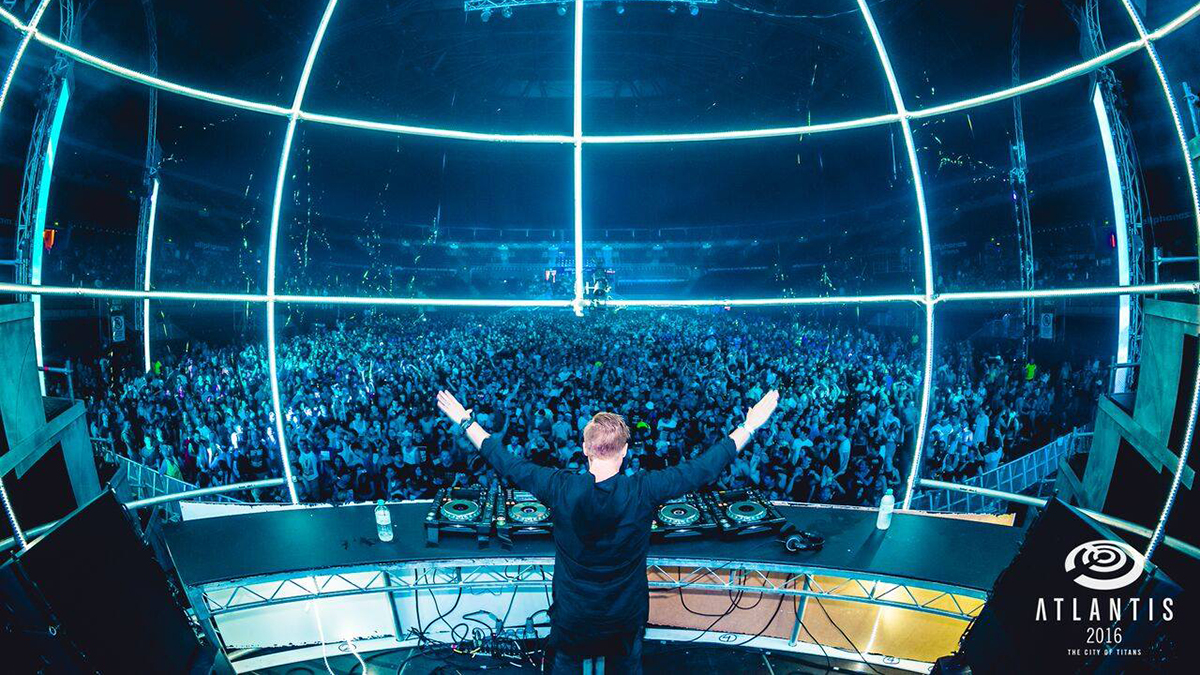Ferry Corsten’s top 10 tips for producers
Dutch DJ and producer gives us some invaluable production tips

With an astonishing 30 aliases under his belt, Ferry Corsten was introduced to the electronic dance scene in 1991 with the bleepy acid track Spirit of Adventure and went on to become one of trance music’s pioneering producers.
Indeed, Corsten was one of the first to bring the genre into the mainstream with his mid-‘90s UK hit ‘Don’t Be Afraid’ under the pseudonym Moonman.
Together with Ministry of Sound, Corsten compiled and mixed the million-selling Trance Nation (1999-2001) series, although these days he’s better known for his eclectic DJ sets and hosting the long-running weekly radio show ‘Corsten’s Countdown’ – alleged to be the first ever interactive EDM radio chart show.
With his new sci-fi concept album ‘Blueprint’ only recently released, we asked the legendary Trance producer to give us his top 10 production tips…
1. Get inspired
“I always listen to a lot of different styles of music, which are not necessarily from my own genre but help inspire me to look at my craft in a different way. In my opinion, trance is closely related to classical music and film score.
“During the process of my latest artist album, Blueprint, I’ve been listening to a lot of film scores, notably a lot of the Icelandic guys. By listening to music you’re not familiar with making yourself, you find that little element that can be so cool when you translate it into your world.”
2. Experiment
“Play with your instruments. I still have a bit of my old hardware like the Roland JP-8000, Nord Rack 3 and the Dave Smith Poly Evolver. I love spending time tweaking the sounds; very often one thing leads to another.
Get the MusicRadar Newsletter
Want all the hottest music and gear news, reviews, deals, features and more, direct to your inbox? Sign up here.
“Save your sounds along the way and there you have it, you’ve just created your own custom sound bank. The one thing I still like about hardware is having that direct connection with your equipment instead of going through controllers, etc.
“No one has ever been punished for using presets, but shake it up a little. Take Omnisphere, which I’m a big fan of. This comes with amazing presets done by fantastic people, but I usually only use it as a starting point for sounds. I use presets a lot to find the sounds that I’m looking for, or at least to get close to the sound I had in mind, then work with it to make it my own.”
No one has ever been punished for using presets, but shake it up a little.
3. Be Unique
A trick that I very often try is using effects that are built for a different purpose. For example, guitar amps for a lead synth can give you the edge.
“I love using guitar rig by Native Instruments. The presets are great, but it comes with an amazing set of different effects that you can combine together. Just by using them on a simple saw, you can sometimes create the most amazing sound.
“I notice a lot of producers nowadays are just blatantly copying the latest hit. Being inspired doesn’t mean copying. Remember, that hit you’re trying to make has been made already. Try to think out of the box and own it.”
4. Try to find symmetry in your melodies
“I always try to find melodies that have a clear beginning and a clear end. Very often I hear melodies that just start but are pretty much impossible to hum too let alone remember. Try to imagine going to a record store and having to sing your track to the guy behind the counter because he doesn’t know it.
“Another cool trick I often use is to do the unexpected in terms of the type of sound you would expect with a melody. For example, play a beautiful sweet melody with a raw distorted sound. They are polar opposites, but can make that melody sound so much cooler.”
5. Keep the momentum going
“Keep the momentum going while you’re in your creative process. Being in the zone is something rare and precious. Make full use of it before you do anything else. I’ve made this mistake in the past when I was in my creative flow - melodies were coming in at amazing speed, but I decided to stop halfway and start editing, mixing, comping and compressing.
“You name it and I did it, thinking it would inspire me even more, but I ended up completely losing my flow and oomph when I returned back to composing.”

6. Find your structure in terms of how you produce
“I learned that the hard way when my productions were just a mess. When I returned to those older tracks to make a radio edit, remix or use some of those files for another track, I couldn’t find anything. MIDI files non-existing, audio files gone… presets gone. My sub groups were all over the place. How the hell did I get into this mess?
“Some DAWs work differently from others, and therefore it may be more time-consuming in terms of organising your files, but it will save you time in the long run. I’m a Cubase guy, and in Cubase I find it very easy to stem out my tracks and put everything in folder files so it’s all nicely bundled together.”
7. Space and room is everything
“I like to keep my tracks spacious and open and like every element to be able to breathe and have its own place in the mix. I’m always very careful about using too many drum loops and synth layers. I’d rather focus on one drum loop that is very present instead of stacking them on top of each other. The same goes for synth leads. I prefer to use one big one and fill it up with reverb and delay. The more layers you put in, the harder it is to get a clear cutting mix and it’s very easy to get lost. It can also sound overproduced.
“An important point is to be careful with compression, especially when using synths. Using just the right amount will make your track more snappy or calm-sounding, but putting too much on everything can completely ruin it. Very often I hear tracks that are over-compressed in order to have that ‘wall’ of sound, but they end up sounding nervous and flat on the dance floor.”
I’m always very careful about using too many drum loops and synth layers. I’d rather focus on one drum loop that is very present instead of stacking them on top of each other.
8. Give your ears a break.
“Go outside for a walk for 10-15 minutes. Take some time to give your ears a rest, especially if you’ve been producing on loop mode. It’s hardly noticeable when you’re working for 12 hours straight, but believe me your ears will get tired and your mix will reflect it.
“It’s also very easy to get lost in the monitor speakers you’re using. Half-way through your production process, take your track to another set of speakers if you don’t have them in your studio or even go to your car, which is usually a good reference point. Listening to your productions in another environment will give you a good reflection of where your mix is at.”
9. Keep it lively
“I’m a big fan of super-tight productions, because with a tight production comes a great punch. One trick I often use is to comp pretty much everything in my track. For example, I’ll play a bassline in MIDI and bounce it to audio then I’ll go through it and find the best-hitting parts. I’ll also do the same thing with my synth riffs. That way you’ll get a much tighter-sounding track than if you’d just let your MIDI run along.
“But there is a danger in this. When a track is too tight, it can sound a little sterile and lifeless. Keep it lively by offsetting your delay times and play around with pre delay in your room or reverb effects. I usually calculate my exact delay time by dividing my song tempo by 60 seconds and multiplying it by the type of delay I’m looking for. For example, .75 to get your dotted delay, which gives you that nice rolling effect on your synth or bassline. Sometimes, purposely offsetting something in the groove will surprise and delight the listener.”
10. Archive
“Need I say more? Refer to point 6 ;) No seriously, this is probably the most boring process of your production but by far the most important one. Having your files perfectly archived will help you in the future when edits and remixes need to be made five years from now or you want to make an updated version of your track.
“Backing up your files is crucial. I’ve had so many experiences in the past when working while travelling only for my hard drive to crash and for me to lose everything I spent so much time on. My studio has a backup of a backup, which is in a different location.”
Check out Corsten Ferry’s latest sci-fi inspired album, Blueprint. For more information, you can visit him on Facebook and Twitter.
“I have an original 909 – every time I try to use it I feel like I’m ruining it”: House hero Riva Starr on his studio essentials and his love of analogue synths
“I’m looking forward to breaking it in on stage”: Mustard will be headlining at Coachella tonight with a very exclusive Native Instruments Maschine MK3, and there’s custom yellow Kontrol S49 MIDI keyboard, too









